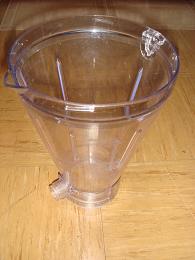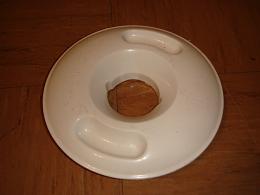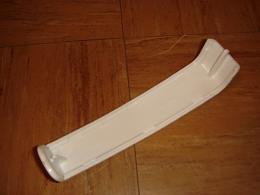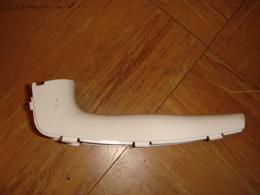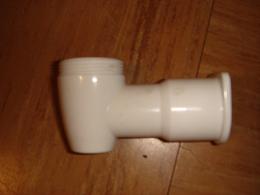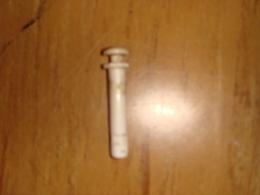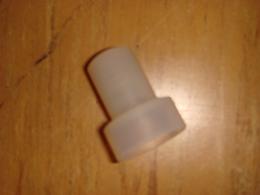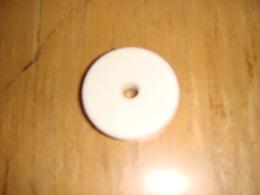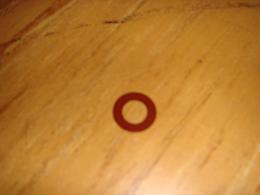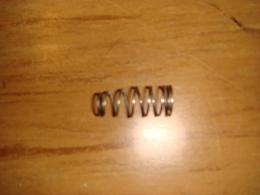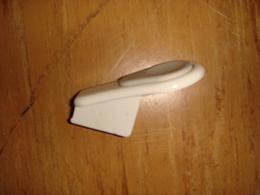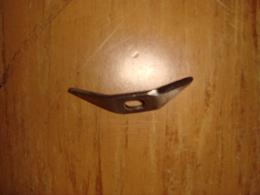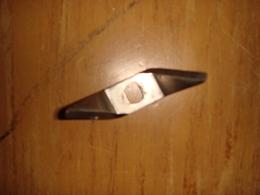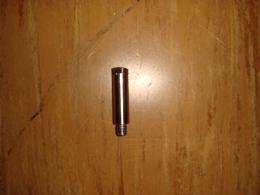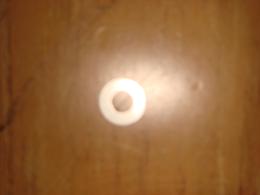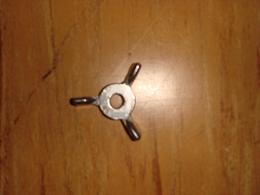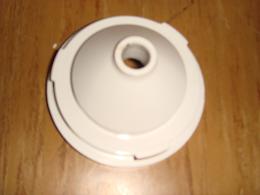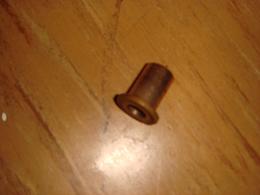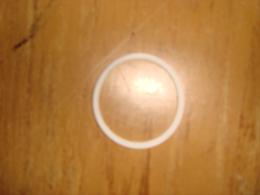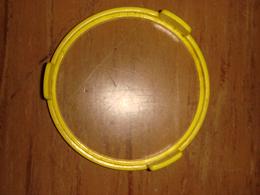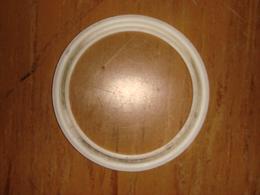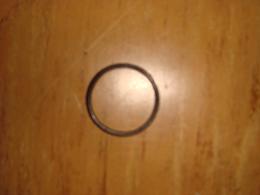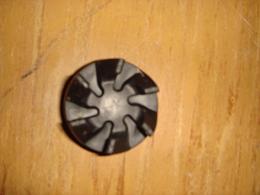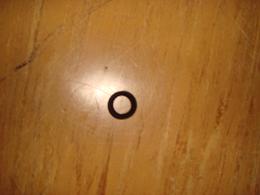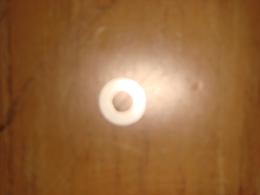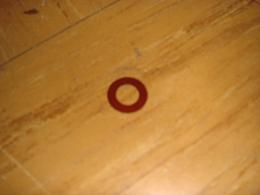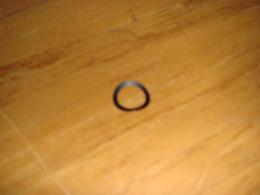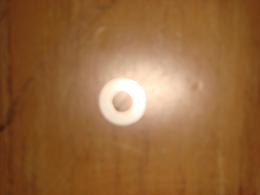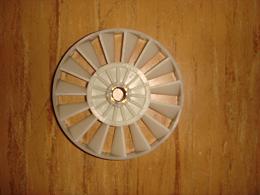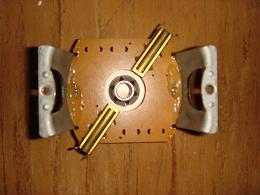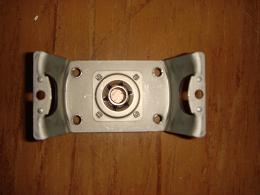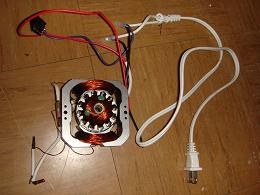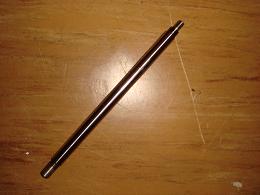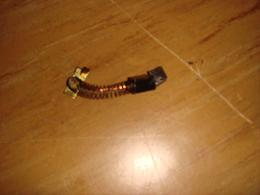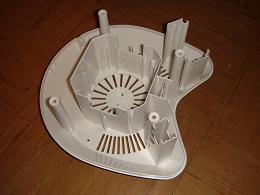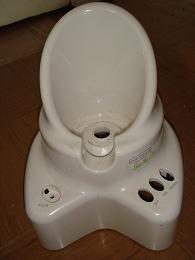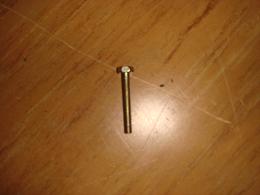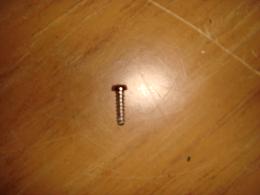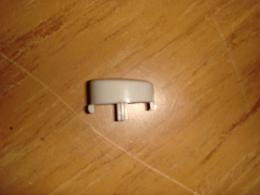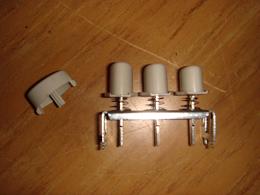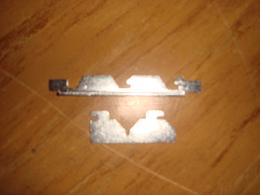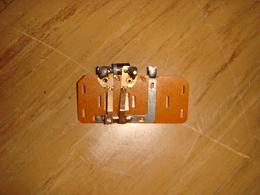Blender
From DDL Wiki
Contents |
Executive Summary
A SHORT product description, what it does, what its inputs and outputs are.
Why we are analyzing this product. What tools we used to analyze it.
Main conclusions/findings in order from most important to least important findings.
The investigation of the Back To Basics Smoothie Maker includes numerous processes that product development entails. The first product analysis begins with the general demand of a customer. This product was produced as a response to a demand for an appliance that makes smoothies, is lightweight, easily accessible and one that has an easy storage capability in a modern house setting. It is assumed to be a user-friendly product. This discussion leads to how the product is used in everyday life and the detailed steps of using this appliance. From an engineering standpoint it is important to address the functioning aspect of the product design and come to a conclusion upon how and why the product was developed in its current fashion.
Next was the disassembly of the product which is crucial in determining how the product was manufactured in mass quantities as well as gaining an overall understanding of the mechanics of the product. Through this examination there is a certain new outlook as to how the product can be improved and where certain design flaws come into play. The design for manufacturing and assembly was investigated from dismantling the product and coming to conclusions on how the designer of the blender needed to keep the manufacturer’s capabilities in mind. Every part of the blender originated and was finalized on either a design decision or a manufacturer’s constraint and decision. The design for the environment is an important design characteristic as well because it affects how this certain product affects the environment we live in. When a product is mass produced it not only affects the customer but the environment due to the numerous industry components vital in producing the specific pieces for the product. The environmental aspect of the design therefore entails every one of the environmental factors that are affected by mass producing this product.
Lastly, was the investigation of future or current mechanical failures and noteworthy design flaws. Failures can lead to dangerous situations that put the customer and even the manufacturer in danger when handling the product. This leads to a legality issue that could put the product and the product’s manufacturer into a lot of trouble. Ample testing is a reliable method to account for future breakdowns and modes of failure. It is not always necessary to test for points of failure but rather to examine deterioration or points of excessive wear on the product. Concluding the analysis was to have a noteworthy mechanical analysis of the product incorporating engineering principles and concepts into this real-life product. Heat transfer was a topic worth investigating due to its fairly topical application through the use of different liquids and frozen foods used for blending. Using assumptions of the liquid contents, the energy equation was used to solve for a final temperature of the liquid contents after blending due to the kinetic energy of the spinning blade.
Major Customer Needs
When examining a blender, it becomes quite obvious that the purpose of the blender is to mix things into a liquid. Often times liquids and solids will be mixed together, for example a milkshake involves mixing milk and ice cream. The way this goal is accomplished is by spinning several blades, at high enough speeds to both grind up solids, and to spin fluids quick enough to create an even mix. Generally a blender will provide several speed settings. These settings are to provide for the different kinds of things you may be mixing.
We have determined that the average customer will use a blender mainly for creating frozen drinks, such as milkshakes, daquiries, pina coladas, etc. It should also be noted that customers will often use it as a mixer for food items like eggs, cake mix, etc. For smoothe, well mixed drinks, it becomes necessary that the blender will spin at high enough speeds to evenly mix all of the ingredients within. It is known to be a hassle when some of the final product comes out as intended, and the rest is still chunky and uneven. This requires a second term of mixing. Another concern for an average user is to have a variety of speeds. This is important because for some drinks, one may want a thicker finish, while in others one may want it to be very smooth. Without speeds settings, it is more necessary that the user decide when it is the way they want it, and this provides for greater user error. A third customer need, is that the blender be easily stored. It is not very common that one would use a blender on a very regular basis, so it would be beneficial that it could be stored away in a drawer or cabinet. As is the case for most products, it is also recommended that the blender be durable and able to last a long time, even when mistakes occur, such as dropping it and mixing hard items. Other design considerations would include but are not limited to user safety and convenience.
The design of a blender should allow for the product to be beneficial over similar products. While there are many tools that exist that can spin to mix foods, a blender should allow for a similar task while holding its contents into some provided volume container. The blender should have a variety of speeds, and be able to exert enough torque to blend a variety of food and drink items of different compositions. In order to make these abilities useful to an ordinary customer, markings and labels should be available to determine the appropriate setting. In a similar fashion, the container should be labeled so as to ensure the appropriate volume of food/fluid items. These are some of the design considerations that are important to customers for use.
Product Use
First, the consumer must remove the blender from the box and plug it in to a 120V wall socket. The consumer must then assemble it by placing the lid on the pitcher, the nozzle on the bottom, and attach the pitcher to the blade turner. These simple steps are straightforward and not difficult to do. The pitcher can only fit in to the base one way because of the grooves and the markings. This makes it easier for the consumer to place the blender in to the base.
The consumer would then fill the pitcher with whatever they would like to blend before adjusting the speed. There are three options: smooth, mix, and pulse. These basic descriptions for the speeds are clear and easy to understand. "Smooth" could be perceived as blending something thoroughly therefore it is the higher speed of the two locking buttons. Mix is slower and could be perceived as more stirring. Pulse can be used to intermittently blend the contents of the pitcher at a highest speed. The pulse button is the only button that does not lock. The other two pop up as soon as another has been pressed. To pour, the consumer removes the top of the blender and grasps it by the handle or the grooves. To store the blender, unplug it and clean thoroughly.
To clean, the consumer takes apart the blender by removing the pitcher from the blade holder by twisting. This is usually kept tight so that liquid does not leak out the bottom therefore it is difficult to remove. Once the base is screwed off, the blades are easy to access. The nozzle must have water passed through to clean thoroughly but it is not intuitive how to screw the nozzle apart.
How System Functions
The system begins with the power of the motor. The motor works as all other motors whereas it converts electrical energy to mechanical energy. It fits snug under the base of the blender and is close to the blades of the blender. The idea of the motor relies on magnetism where one of the two main parts, the rotor, rotates due to a torque caused by the wires and magnetic field configuration. A voltage is applied to the lead battery wires originating from the AC plug that takes power from the wall socket. Along the shaft is the armature which is a set of electromagnets. This set up of magnets is constantly in rotation due to the opposite attraction of the magnetic field from the larger magnet and the wires around the armature. Electron flow changes constantly to allow for the constant rotation and magnetic flow. This axis is then attached through the motor box up until the opening of the blender. This rotation becomes transferred into the shaft of the blender axis. This same axis is connected to the two blades which are the tools necessary for the blending action.
Connected to the axis as well is a fan pointed towards the bottom of the base. There are slits at the bottom of the base that allows for the heat to be sent away from the blender. Since the blender sits on four legs there is more ability for air movement.
http://electronics.howstuffworks.com/motor.htm
Product Disassembly
Design for Manufacture and Assembly
The current product is composed of 4 major components. The first being the pitcher, the next being the motor, the base and lastly the operator control. The pitcher is plastic and the mold is made through injection molding allowing for an attached handle. There is the additional blade assembly that is placed at the base of the plastic pitcher. This piece is also plastic but needs to be bored out with a drill through the middle forming an area for a long screw from the blade assembly. The production of the blades in the blade assembly is from a slab of metal where slices of equivalent sizes can be taken in order to produce mass amounts of blades at one time. This is a helpful design decision that aides in the efficiency and productivity of the mechanical process. The blender blade setup uses two identical blades 90 degrees to each other that sit on top of one another that kept in place with simple washers and a long screw. There are small gradations on the side indicating liquid volume and these markings are etched into the plastic container using a mechanical tool.
The second major component is the motor which is hidden inside the base and directly under the pitcher. The motor is from a specialized motor company. The problem of heat transfer must be thoroughly examined to make sure the heat produced from the motor and its components will not melt the parts nearby. The motor is made to fit under the base and is sufficiently mounted. The mounting clips are under the blender base and are made to withstand the movement associated with the vibrations from the motor. The mounting clips are extensions on the base allowing for more strength.
The third main component is the base itself. It is made of plastic and is mass produced most likely by injection molding. The thickness of its walls are based on a limit to how thin a plastic piece can be made in the manufacturing process. The base is made durable enough to withstand added liquid in the pitcher as well as a running motor.
The last component is the operator control that allows the user to choose between two different blender speeds as well as an option to stop the blending. This set up harnesses the electrical wiring component of the blender. Wiring placement is important because the ability for wet liquids to dispel around or near the harness could lead to extreme danger or malfunction. The wiring is designed far from the liquid contents of the blender and the wiring is sealed to maintain a cooler operating temperature as well as to keep the wires dry.
Design for the Environment
With the research that we’ve done so far, we have found five strategies that if improved, could decrease the impact our product has on the environment. The major concerns include, but are not limited to, new concept development, low impact materials, manufacturing, maximizing first life, and end of life.
New Concept Development - By integrating several other functions in to the blender, it could reduce the need for other appliances within the kitchen. It’s current design featuring the nozzle at the base of the blender allows users to use the blender as both a blender and a pitcher.
Low Impact Materials – The majority of the parts of the blender are plastic which has an awful impact on the environment. It is difficult to recycle and even the process of recycling can emit harmful fumes. The packaging used, cardboard, could be changed to recycled cardboard.
Manufacturing – Further research should be done in to the manufacturing processes and perhaps there could be a reduction in the amount of waste materials.
Maximizing First Life – Clearer instructions on disassembly and cleaning could help decrease the possibility of breaking the blender while trying to do either. Breaking could lead the need to replace multiple parts and damaging the environment further.
End of Life – The motor of the blender could be recycled but the majority of the materials can not. The pressed plastic was made specifically for the blender thus it wouldn’t be reused for anything else, and is very difficult to recycle.
Failure Mode Effects and Analysis
The following chart represents the failure modes that have been agreed upon as the greatest possible failures of the blender. The purpose of a Failure Mode Effects and Analysis chart is to assess the risks involved in the process of using a product, and to determine the importance to deal with each mode of failure. This is done by estimating a value that will indicate the severity, occurance, and detection of each error, and multiplying the values together. In order to deal with these issues, the chart then offers a possible action to solve the error, and will again account for the severity, occurance, and detection. By this way, one can see how effective the improvement is.
| Item & Function | Failure Mode | Effects of Failure | S | Causes of Failure | O | Design Controls | D | RPN | Recommended Actions | Responsibility & Deadline | Actions Taken | S* | O* | D* | RPN* |
|---|---|---|---|---|---|---|---|---|---|---|---|---|---|---|---|
Motor
| Motor overheating | Motor will not be able to turn the blades and would make blender useless. | 8 | Motor could overheat if left on too long when trying to blend foods of a harder consistency | 6 | Testing fan output that assists in cooling motor, as well as testing motor at max speeds with a variety of loads. | 8 | 384 | Incorporate a switch in that would shut the blender off if the torque approached it failure point. | Manufacturer of Motor | N/A | 8 | 2 | 8 | 128 |
Blade
| Blade edge dulls | It will take longer to mix and smooth as well as making it more diffcult to break apart certain items. | 3 | Overuse and attempting to break apart dense, hard items. | 5 | Test blade with items of a variety of densities and composures. | 2 | 30 | Find an appropriate material, thickness, and angle that will be least likely to dull. | N/A | N/A | 3 | 2 | 3 | 18 |
Pitcher
| Plastic cracks | Items being blended will leak out side of blender. | 4 | Dropped from a high height. | 7 | Test stress on blender when dropped. | 3 | 84 | Test different shapes and wall thicknesses to find a contaner least likely to break. | N/A | N/A | 3 | 4 | 3 | 36 |
Handle
| Breaks off | No handle to carry blender. | 3 | Dropped from a high height. | 7 | Test snap together fits to identify breaking points. | 2 | 42 | Test other ways to fit parts together to find most cost effective solution | Assembler | N/A | 3 | 3 | 3 | 27 |
Motor Coupling
| Uncouples | Blade will not spin even while motor does. | 8 | Motor spins incorrect direction. | 2 | Test possible ways that would cause motor to spin in wrong direction. | 8 | 128 | Find a controller or switch that would deactivate motor if it were to start spinning in wrong direction. | Manufacturer | N/A | 8 | 1 | 7 | 56 |
Wiring
| Wire becomes disconnected | Current will be unable to power motor or similar function. | 8 | Wire tangled with moving parts. | 2 | Test different fastners to hold wire parts. | 3 | 48 | Test different positions for wire to be fastened to reduce tangling. | Assembler | N/A | 8 | 1 | 2 | 16 |
Upon examining the FMEA for the blender, it can be observed that the failures include issues that would make the product unable to be used entirely, and also ones in which it just becomes more of an inconvience to the consumer. Both issues are important to consider, and the difference in importance can be noted from the values in the chart. Malfunction of the motor, coupling, and wiring would disable use of the blender entirely, while cracks in other components are not as significant. Examining the values in the chart for the motor overheating, it is obvious that it is a very severe issue, resulting in a 9, however it is not all that likely to occur explaining the 6 for occurance. A part such as the motor that is not easily accesible to the user, makes it difficult to detect the failure. This is an example that justifies the method used to determine our values. These failure modes are often best dealt with by conducting tests to find the best way to create a product that is both cost effective and satisfies the user.
Mechanical Analysis
If one is blending the contents of a blender for one minute what is the change in temperature of the blender contents?
Assumptions:
1. Objects, liquids or frozen fruits added to blender are all at 0 degrees Celsius
2. Final temperature of the contents of the blender is unknown
3. Mass and specific heat of contents in blender is equal to that of H20
4. Only 33% of Power from motor is being converted into heat
5. Contents in blender total to 1000mL
Calculations:
Using the Energy balance equation:
mCpΔT –W = ΔE
Q = heat
W = work done by the system
ΔE = change in energy
ρ = density
m1 = mass of blender contents
Q – W = ΔE
Q = (mass)*(specific heat)*(change in Temp) = mCpΔT
ρH20 (ice) = .92g/mL
m1 = 1000mL *.92g/mL = 9200 g ice
Cp H20 = 2111.4J/(kg*K)
mCpΔT = 9.2kg *2111 .4J/(kg*K)*ΔT = 19,424.88* ΔT
W = .33(500W) = 400J/sec*(60sec) = 24000J
ΔE = 0
mCpΔT = W => ΔT = 24,000J/19,424.88 = 1.24C
